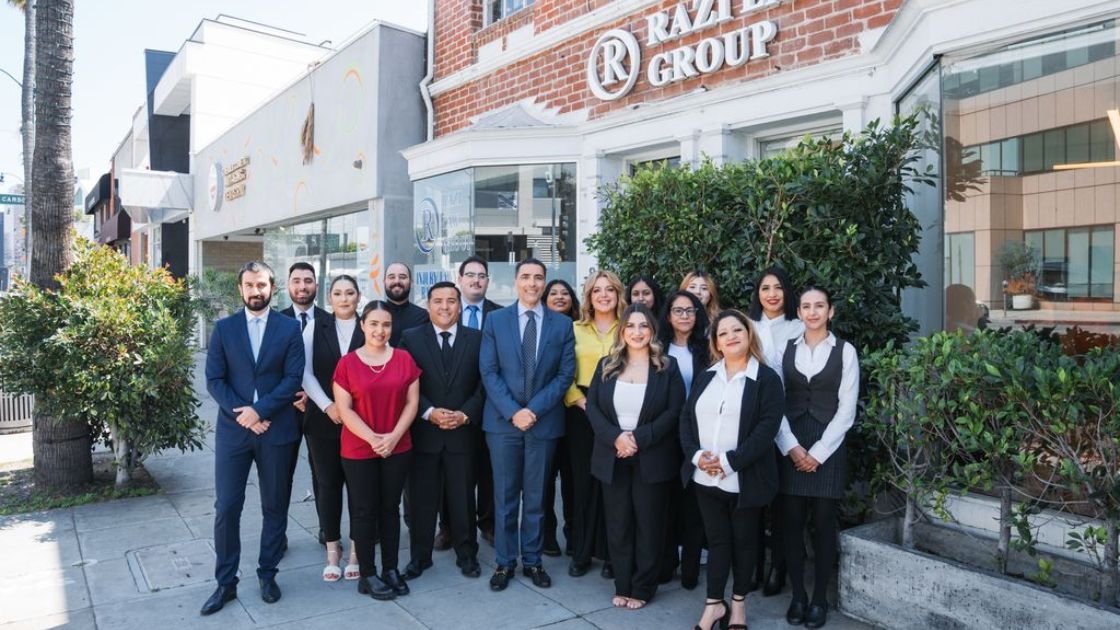Law Government
Promoting Integration in a Multicultural Society: How Governments Can Support Immigrants

Introduction
As the world becomes more interconnected, multiculturalism is becoming increasingly common. With the rise of globalization, people from different cultures are coming together in cities and towns around the world. While this can be a positive development, it can also create challenges for governments and communities. One of the biggest challenges is promoting integration among immigrants and the wider society. In this article, we will explore how governments can support immigrants and promote integration in multicultural societies.
Understanding Integration
Integration is a complex process that involves the interaction of individuals from different cultures. It is not simply a matter of assimilation, where immigrants are expected to adopt the culture of the host society. Rather, integration involves a two-way process where both immigrants and the host society adapt to each other. This can involve learning about each other’s cultures, customs, and values, as well as finding ways to live and work together.
Challenges to Integration
There are many challenges to promoting integration in multicultural societies. One of the biggest challenges is language. Immigrants who do not speak the language of the host society may struggle to communicate with others and find it difficult to access services. This can lead to social isolation and exclusion. Another challenge is discrimination. Immigrants may face discrimination based on their race, ethnicity, or religion, which can make it difficult for them to feel like they belong in the host society. Finally, there may be cultural differences that can lead to misunderstandings and conflicts.
Government Support for Integration
Governments can play an important role in promoting integration in multicultural societies. One way they can do this is by providing language classes for immigrants. This can help them to learn the language of the host society and improve their communication skills. Governments can also provide funding for community organizations that work with immigrants. These organizations can provide support and services to help immigrants integrate into the wider society.
Another way governments can support integration is by promoting diversity and inclusion. This can involve creating policies that promote diversity in the workplace and in public life. Governments can also work to combat discrimination and prejudice by promoting tolerance and understanding. Finally, governments can work to create opportunities for immigrants to participate in the wider society. This can involve creating programs that encourage immigrants to become involved in community activities and events.
Conclusion
Promoting integration in multicultural societies is a complex process that requires the cooperation of both immigrants and the wider society. Governments can play an important role in supporting immigrants and promoting integration. By providing language classes, funding community organizations, promoting diversity and inclusion, and creating opportunities for immigrants to participate in the wider society, governments can help to create a more inclusive and welcoming society for all.
Law Government
Parking Lot Hit and Run: What to Do If You’re a Victim?

Introduction
Parking lots are the busiest places with cars moving in and out, and unfortunately, accidents are common here. But when a pedestrian or driver faces a hit-and-run, it’s more complicated, frustrating and stressful. Hit and run is basically when a driver hits you and flees the scene, without taking any responsibility. Whether it’s a minor or serious injury caused by the driver, you may feel helpless and confused about what to do next.
Well, knowing the proper steps to take after an accident is crucial to protect your rights. Knowing what to do can help you protect your rights, assist in insurance claims, and even increase your chances of holding the person at fault accountable. This article will walk you through the steps you should know if you’re a victim of hit and run in a parking lot.
Understanding Parking Lot Hit and Run Accident
Hit and run accidents are quite common, not only in parking lots, but everywhere. Well, these accidents leave you confused, physically injured and emotionally devastated. But what causes these accidents? Well, it can be due to a lot of causes, such as distracted drivers, poor visibility. These accidents are common, but what makes these accidents challenging is the driver who caused the damage and fled the scene.
Steps to Take Right After a Hit and Run in a Parking Lot
1. Prioritize Your Safety
Your safety is over anything! So if you’re hit by a car, move to a safe area where there are no moving vehicles or anything hazardous. And check yourself and your passengers, if they are hurt or injured anywhere. Even if everything seems fine, it is advisable to pay a visit to a doctor. Some injuries might not be immediately visible, so seeking medical attention is crucial.
2. Document the Scene and Damage
If your vehicle was also hit, or if you were struck as a pedestrian, you should gather evidence such as:
- Clear photos and videos of the damage caused to your vehicle. Record the surrounding areas, too, for any debris or paint marks left by the other car.
- Note the exact location, date, and time of the incident.
- Look, if there are any eyewitnesses who might have seen the scene or the fleeing vehicle. Ask for their contact number to get in touch with them.
- Moreover, check out the surveillance cameras in the parking lot to get a recording of the accident.
3. Report the Incident
Reporting the incident is a crucial step after a hit-and-run in a parking lot. Call the police, file a report that creates the official date of the accident. Now, you might be wondering why this is important. Well, this is often required by the insurance companies to identify the responsible driver. When filing a complaint, provide all the evidence you have collected, such as videos, photos, and witness statements.
4. Notify Your Insurance Company
Get in touch with your insurance provider to report the hit and run accident. Provide them with your police report number and all the documents you’ve gathered. Depending on your policy, the insurer may cover the damages under collision motorist coverage. This step is essential in order to begin your claims process and even get compensation for repairs and medical bills.
Additional Tips for Handling a Hit and Run Parking Lot Incident
1. Stay Calm and Avoid Confrontation
If you ever witness a hit and run accident, or you are involved in one, you may feel frustrated, angry and upset, but make sure you never chase or confront a fleeing driver. This attempt can be dangerous, and prioritizing your safety is crucial. Instead, you should focus on gathering information, evidence and then report the incident to the authorities.
2. Check for Injuries and Seek Medical Attention
If you were physically hit or injured in hit and run, you should seek medical help as soon as possible. Even if the injuries feel minor, you should reach out to a doctor to ensure you’re in good health. Moreover, some injuries don’t show up immediately.
3. Preserve All Evidence and Records
When you have various pieces of evidence, you should always keep copies of them. Keep all documents related to the incident such as police report, insurance correspondence, medical bills, and repair estimates. This evidence and records are essential to take further legal steps.
Legal Options and Seeking Professional Help
Navigating hit and run accidents is often complex, especially when the driver remains unidentified. But consulting a hit and run lawyer is essential to understand your rights and options. An attorney can help you with:
- Investigating the incident and working with law enforcement to track down the responsible driver.
- Navigating insurance claims and ensuring you receive fair compensation.
- Representing you in court if necessary to recover damages for injuries, vehicle repairs, or emotional distress.
Preventive Measures to Protect Yourself in Parking Lots
You can’t control how others drive, but you can take some precautions to reduce the risk of hit and run in a parking lot.
- Park in well-lit, busy areas where surveillance cameras are there to capture in case anything happens.
- Always lock your vehicle and be aware of your surroundings when entering or leaving your car.
- If possible, take photos of your parked car before leaving it in unfamiliar or high-risk areas.
- Report any suspicious behaviour or reckless driving in parking lots to property management or security.
In a Nutshell!
Being a victim of hit-and-run in a parking lot is stressful and unsettling, but when you’re aware about what you can do in these situations, you can protect your rights and recover the losses. But make sure you’re prioritizing your safety always. Document everything, report to the police, and notify your insurance company to make sure your rights are protected. And, if the responsible driver can be identified, nothing better than that. Legal professionals can help you explore your options for compensation. Just follow the steps promptly and navigate the aftermath.
Law Government
Johnson Vorhees Martucci: Trusted Birth Injury Lawyer in Joplin

Introduction
Welcoming a child into the world should be one of the most joyous and memorable moments of a parent’s life. The anticipation, excitement, and love surrounding the birth of a baby are unlike anything else. Unfortunately, for some families, this special time turns tragic due to preventable medical mistakes. A birth injury can leave lasting physical, emotional, and financial challenges. At Johnson Vorhees Martucci (JVM), we understand the pain families endure when a trusted medical professional fails to provide safe care. Our mission is to stand beside you, advocate for justice, and secure the resources your child needs for a better future.
What Are Birth Injuries?
Birth injuries occur when an infant is harmed before, during, or immediately after delivery due to complications or medical negligence. While some injuries may be minor and resolve quickly, others cause lifelong disabilities that require ongoing treatment. Common types of birth injuries include:
- Cerebral Palsy: Caused by brain damage due to oxygen deprivation, leading to impaired movement and muscle control.
- Brachial Plexus Injuries: Nerve damage that affects the arms and shoulders, often resulting in weakness or paralysis.
- Fractures and Broken Bones: Sometimes caused by the improper use of delivery tools.
- Brain Damage: Often linked to prolonged labor, delayed C-sections, or failure to monitor fetal distress.
- Developmental Delays: Resulting from untreated complications during delivery.
Not every complication is preventable, but many occur because medical providers fail to act with appropriate skill and care. When mistakes such as delayed diagnoses, improper use of medical equipment, or failure to monitor vital signs happen, families deserve answers and accountability.
How Birth Injuries Affect Families
The impact of a birth injury reaches far beyond the delivery room. Parents often face overwhelming medical expenses for surgeries, therapies, and specialized care. Depending on the severity, children may require adaptive equipment, lifelong medication, or even in-home nursing support.
Beyond financial stress, families endure emotional struggles—fear for their child’s future, frustration with unanswered questions, and the grief of lost expectations. Siblings and extended family members are also affected as daily life changes dramatically. Seeking justice through legal action is not just about compensation—it is about giving families hope, security, and a voice in holding negligent parties accountable.
The Role of an Experienced Attorney
Navigating a birth injury case requires legal and medical knowledge, detailed investigation, and relentless advocacy. These cases are complex because hospitals and insurance companies often work hard to deny responsibility. That is why choosing the right attorney is critical.
A skilled lawyer will:
- Collect and analyze medical records to identify errors.
- Work with medical experts to establish negligence.
- Calculate current and future financial needs, including therapies, special education, and lost earning capacity.
- Handle negotiations with insurance companies determined to minimize payouts.
- Represent families in court, if necessary, to fight for full justice.
Parents should never have to go through this process alone. An attorney ensures the truth comes to light and that families have the support they need during one of the most difficult times of their lives.
Why Choose Johnson Vorhees Martucci
At Johnson Vorhees Martucci, we have built our reputation on compassion, dedication, and proven results. Our attorneys have decades of combined experience representing families in medical malpractice and personal injury cases. We know how devastating birth injuries can be, and we are committed to fighting tirelessly for the compensation your family deserves.
What sets us apart?
- Experience: We have handled numerous birth injury claims, securing justice for families against hospitals and medical providers.
- Resources: Our firm works with leading medical experts to investigate cases thoroughly.
- Compassion: We treat every family with respect, dignity, and care, knowing the challenges you face.
- Results: We have achieved significant verdicts and settlements, ensuring children have access to lifelong care and resources.
When you partner with JVM, you are not just hiring attorneys—you are gaining a team dedicated to standing with you at every step of the journey.
Taking the First Step Toward Justice
If you believe your child’s birth injury was preventable, time is of the essence. Medical malpractice claims must be filed within specific time limits known as statutes of limitation. Acting quickly allows evidence to be preserved, medical experts to review the case, and legal strategies to be built effectively.
At Johnson Vorhees Martucci, we make this first step as simple as possible. We offer free consultations where families can share their story, ask questions, and learn about their options. There is no obligation, and our attorneys will provide clear, honest guidance about your case.
Equally important, we operate on a contingency fee basis. This means you pay nothing upfront and no attorney fees unless we win compensation for your family. Our focus is on relieving your burden so you can prioritize your child’s care.
Empowering Families Through Justice
A birth injury changes lives, but it should not define your child’s future. With strong legal representation, you can secure the resources necessary to provide therapy, education, and opportunities for growth. You can also ensure that negligent medical providers are held accountable, preventing future harm to other families.
At Johnson Vorhees Martucci, we believe every child deserves the chance to thrive. We are here to fight for justice, provide peace of mind, and support families in rebuilding their lives after tragedy.
If you are searching for a trusted birth injury lawyer joplin, know that Johnson Vorhees Martucci is ready to stand with you. Our team has the experience, compassion, and determination to protect your rights and secure a brighter future for your child.
Law Government
Wrongful Death Claims in California: A Guide for Grieving Families

Introduction
“This guide covers California wrongful death claims, including who can file one, what damages can be claimed, time limits, and how a dedicated Los Angeles injury attorney can help.”
We at Razi Law Group know how hard it is to lose someone you love. When someone else is careless or does something wrong that causes the loss anger and confusion usually make the grieving worse. Families need someone who cares is clear and fights for them during these tough times. As experienced abogados de lesiones personales los angeles, we are here to help you with the legal procedure with care and support so you can focus on getting better.
What Constitutes a Wrongful Death Claim in California?

Image by: Yandex.com
In California a wrongful death is caused by someone else’s wrongful act or neglect. This means that if someone had a personal injury claim before they died, their family can now file a claim on their behalf. Car accidents medical negligence industrial accidents or faulty products are some of the most common reasons for these kinds of claims. The main question is whether the other person’s lack of reasonable care caused your family’s terrible death.
Who Is Eligible to file a Wrongful Death lawsuit?
The law is specific about who can bring a claim and typically the immediate family is eligible. This includes the surviving spouse, domestic partner, and children. If there is no immediate family, anyone who would be entitled to the person’s property under California’s inheritance laws may bring the action, such as parents or siblings. A skilled personal injury attorney Los Angeles California can help determine your specific standing to file a claim.
California law says which family members can file a wrongful death claim. Usually the right goes to the immediate family which includes the surviving husband or domestic partner and children. If there are no immediate survivors the right may go to parents siblings or other people who would get it under state law. It might be hard to figure out exactly who is eligible so it is important to talk to an experienced personal injury lawyer to grasp your family legal situation and rights at this tough time.
What Types of Damages Can Be Recovered?
A wrongful death claim asks for financial assistance or damages to make up for the losses your family has suffered. Even while no amount of money can bring back your loved one, it can help you get back on your feet financially. Recoverable damages often include:
- Funeral and burial expenses.
- The financial support the deceased would have contributed.
- The loss of gifts or benefits expected from the loved one.
- The value of the household services the deceased provided.
- The loss of love, companionship comfort or care and guidance.
What Is the Statute of Limitations?
Time is really important. The wrongful death case in California usually has to be filed within two years of the person’s death. If you miss this severe deadline, your family may never be able to get justice and money. As soon as you can, you should talk to a personal injury attorney LA to make sure you meet all the necessary deadlines and keep all the evidence.
You only have a short amount of time to file a wrongful death case in California. The statute of limitations says that this law usually lasts for two years after the death of a loved one. This deadline is set in stone. If you miss this window your family may lose the ability to seek justice and compensation through the civil court system for good. To preserve your claim and make sure all legal deadlines are met you need to talk to a knowledgeable lawyer very soon.
How Can a Los Angeles Injury Lawyer Help Your Family?

Image by: Yandex.com
The judicial system is hard to understand, especially when you’re sad. An experienced injury lawyer in Los Angeles will take care of every part of your case. This means doing a full investigation, collecting proof, talking to pushy insurance companies, and, if necessary, going to court. Your lawyer is like a shield for you, taking care of all the legal issues so you can spend time with your family. Read our article on Why Experience Matters: Choosing the Right LA Injury Lawyer to learn more about how to choose a dedicated advocate.
Conclusion
No family should have to deal with a wrongful death claim on their own. You can hold people accountable and get the help you need to move on all while honoring your loved one memory through justice.
Losing a loved one in an unexpected way is painful and life-changing. For families in California, a wrongful death claim can be a way to seek justice and secure financial support. This legal process helps hold responsible parties accountable and can ease the burdens that come with such a loss.
If you believe your family may have a wrongful death claim, it’s important to act quickly and consult an experienced attorney. Understanding your rights and options will guide you through the process during this difficult time.
Remember, wrongful death claims not only provide compensation but also honor the memory of your loved one by ensuring their loss leads to justice and safer futures.
-
Business2 years ago
Cybersecurity Consulting Company SequelNet Provides Critical IT Support Services to Medical Billing Firm, Medical Optimum
-
Business2 years ago
Team Communication Software Transforms Operations at Finance Innovate
-
Business2 years ago
Project Management Tool Transforms Long Island Business
-
Business2 years ago
How Alleviate Poverty Utilized IPPBX’s All-in-One Solution to Transform Lives in New York City
-
health2 years ago
Breast Cancer: The Imperative Role of Mammograms in Screening and Early Detection
-
Sports2 years ago
Unstoppable Collaboration: D.C.’s Citi Open and Silicon Valley Classic Unite to Propel Women’s Tennis to New Heights
-
Art /Entertainment3 years ago
Embracing Renewal: Sizdabedar Celebrations Unite Iranians in New York’s Eisenhower Park
-
Finance3 years ago
The Benefits of Starting a Side Hustle for Financial Freedom































